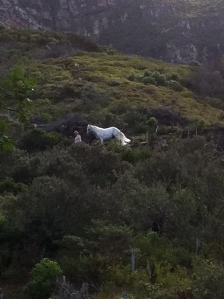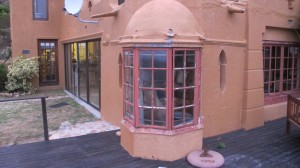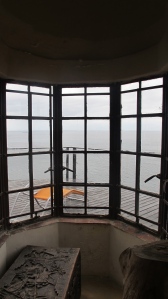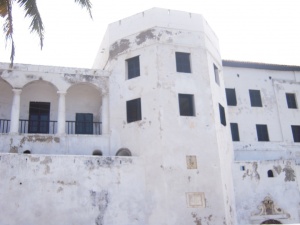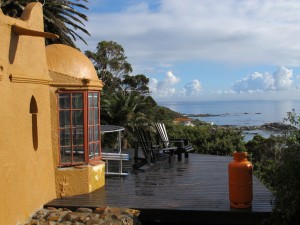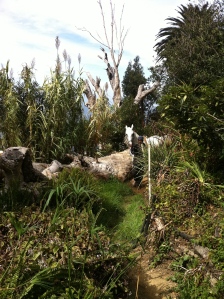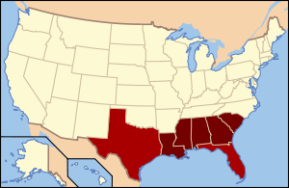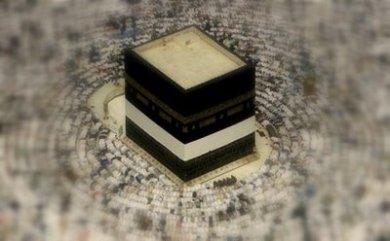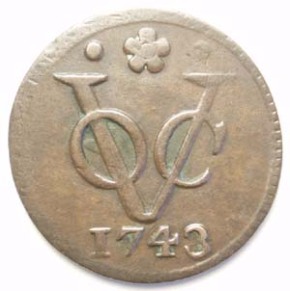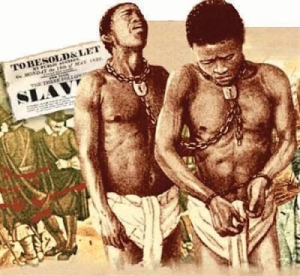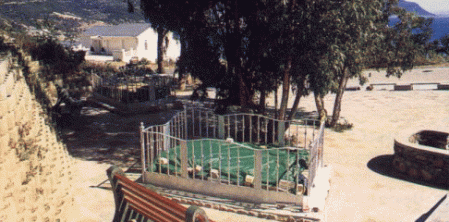Whenever Lalu Abdul tethered his horses to P.E, Hugo’s gums he would have looked up to the flat promontory where the stone house now stands. Surely he would have been lured there by the sweeping views of the sea and the towering cliffs of the mountain and decided this secluded spot, halfway between the farms of Cape Point and the village of Simon’s Town, was the perfect place to break his journey. Perhaps after washing in the perennial stream that Hugo’s gums depleted but seldom staunched, he would lay out his prayer mat, face the “Qiblah” and recite his prayers. Given the fact that dawn is the time when the Blue Gums sky is often a fiery red, and the fact that as a fugitive Lalu Abdul would have travelled under the cover of darkness, it is tempting to think that more often than not it was the dawn prayer, “Fajr” that he recited here.
Blue Gums Sunrise
The question still remains: how did the padre know that there once was a Muslim holy man who prayed on the flat ground, seventy metres above the sea, where he later decided to build his house? The Padre was a worldly man, and as a result perhaps less constrained by convention than most of his fellow white South Africans. Who knows? His ecclesiastic interests may have been non-sectarian, and when he encountered the members of the Muslim community of Simon’s Town he may have shown more than a cursory interest in their experiences and they may have told him a bit about their own history of this part of the world. But exactly why a priest chose to build a “mihrab” in his mountainside house must remain, for now, one of the secrets that Blue Gums will not give up.
In my mind’s eye I see the ghost of the old priest turn away from his fellow carousers and nod his head ever so slightly towards a turbaned phantom leading a white horse down the watercourse, and then heading up the road to Simon’s Town.
Oh and one last thing … it seems as if the story of Lalu Abdul, the sultan from Indonesia, brought to Simon’s Town in chains, only to escape and live at Antonie’s Gat in Cape Point, is a fiction. Then again, one does not have to believe in ghosts to use them to reconstruct a more balanced history of our past. There were indeed Sultans and Imams who became runaway slaves living in the Mountains of the Cape. There is a Kramat above Runciman Drive in Simon’s Town. There is a hidden history of Simon’s Town – the history of the descendants of slaves.
And Blue Gums is just the kind of place where spiritual renegades make their mark … but there still remains the mystery of the “mihrab” that was meticulously laid out and built by a Christian priest.

